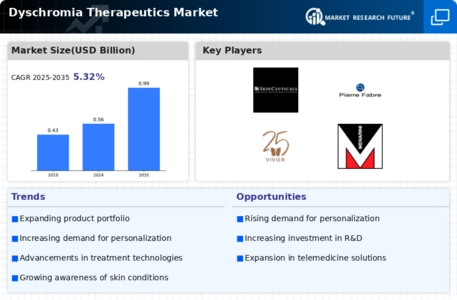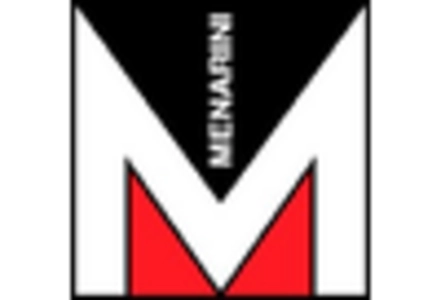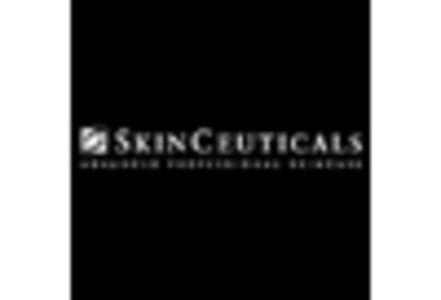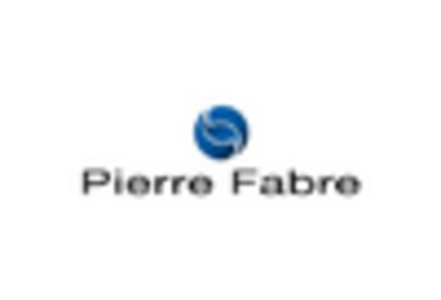-
EXECUTIVE SUMMARY
-
MARKET INTRODUCTION
-
Definition
-
Scope of the Study
- Research Objective
- Assumptions
- Limitations
-
RESEARCH METHODOLOGY
-
3.1.
-
Overview
-
Data Mining
-
Secondary Research
-
Primary Research
- Primary Interviews and Information Gathering Process
- Breakdown
-
of Primary Respondents
-
Forecasting Modality
-
Market Size Estimation
- Bottom-Up Approach
- Top-Down Approach
-
Data Triangulation
-
Validation
-
MARKET DYNAMICS
-
Overview
-
Drivers
-
Restraints
-
Opportunities
-
MARKET FACTOR ANALYSIS
-
5.1.
-
Value Chain Analysis
-
Porter’s Five Forces Analysis
- Bargaining
- Bargaining Power of Buyers
- Threat of
- Threat of Substitutes
- Intensity of Rivalry
-
Power of Suppliers
-
New Entrants
-
COVID-19 Impact Analysis
- Market Impact Analysis
- Opportunity and Threat Analysis
-
5.3.2.
-
Regional Impact
-
GLOBAL DYSCHROMIA
-
THERAPEUTICS MARKET, BY THERAPY
-
Overview
-
Topical Creams
-
6.3.
-
Laser Therapy
-
Phototherapy
-
Vitamin C lontophoresis
-
6.6.
-
Microneedling
-
Others
-
GLOBAL DYSCHROMIA THERAPEUTICS MARKET, BY
-
ROUTE OF ADMINISTRATIONR
-
Overview
-
Hospitals
-
Esthetic
-
Clinics & Dermatology Centers
-
Others
-
GLOBAL DYSCHROMIA THERAPEUTICS
-
MARKET, BY ROUTE OF ADMINISTRATION
-
Overview
-
Topical
-
8.3.
-
Patch
-
Others
-
GLOBAL DYSCHROMIA THERAPEUTICS MARKET, BY REGION
-
Overview
-
North America
- U.S.
- Canada
- Germany
- France
- U.K
- Italy
- Spain
- Rest of Europe
-
9.3.
-
Europe
-
Asia-Pacific
- China
- India
- Japan
- South Korea
- Australia
- Rest of Asia-Pacific
-
Rest of the World
- Middle East
- Africa
- Latin America
-
COMPETITIVE LANDSCAPE
-
10.1.
-
Overview
-
Competitive Analysis
-
Market Share Analysis
-
10.4.
-
Major Growth Strategy in the Global Dyschromia therapeutics Market,
-
Competitive
-
Benchmarking
-
Leading Players in Terms of Number of Developments in the
-
Global Dyschromia therapeutics Market,
-
Key developments and Growth Strategies
- New Therapy Launch/Route of Administrationr Deployment
- Merger
- Joint Ventures
-
& Acquisitions
-
Major Players Financial
- Sales & Operating Income, 2022
- Major Players
-
Matrix
-
R&D Expenditure. 2022
-
COMPANY PROFILES
-
Bayer AG
- Financial Overview
- Therapys Offered
- Key Developments
- SWOT Analysis
- Key Strategies
-
11.1.1.
-
Company Overview
-
ALLERGAN (AbbVie Inc.)
- Company Overview
- Financial
- Therapys Offered
- Key Developments
- Key Strategies
-
Overview
-
11.2.5.
-
SWOT Analysis
-
Galderma S.A. (Nestle Skin
- Company Overview
- Financial Overview
- Key Developments
- SWOT Analysis
-
Health S.A)
-
11.3.3.
-
Therapys Offered
-
11.3.6.
-
Key Strategies
-
SkinCeuticals
- Company Overview
- Therapys Offered
- Key Developments
- SWOT Analysis
- Key Strategies
-
11.4.2.
-
Financial Overview
-
Pierre Fabre
- Financial Overview
- Therapys Offered
- Key Developments
- SWOT Analysis
- Key Strategies
-
11.5.1.
-
Company Overview
-
EPIPHARM AG.
- Company Overview
- Financial Overview
- Therapys Offered
- Key Developments
- SWOT Analysis
- Key Strategies
-
RXi Pharmaceuticals Corporation
- Financial Overview
- Therapys Offered
- Key Developments
- SWOT Analysis
- Key Strategies
-
11.7.1.
-
Company Overview
-
Obagi Cosmeceuticals LLC (Obagi medical)
- Company Overview
- Financial Overview
- Therapys Offered
- Key Developments
- SWOT Analysis
- Key Strategies
-
Vivier Pharma.
- Company Overview
- Financial Overview
- Therapys
- Key Developments
- SWOT Analysis
- Key
-
Offered
-
Strategies
-
Sirona Biochem’s
- Company Overview
- Financial Overview
- Therapys Offered
- Key Developments
- SWOT Analysis
- Key Strategies
-
Menarini Group
- Company Overview
- Financial Overview
- Therapys
- Key Developments
- SWOT Analysis
-
Offered
-
11.11.6.
-
Key Strategies
-
APPENDIX
-
References
-
Related Reports
-
-
LIST OF TABLES
-
GLOBAL DYSCHROMIA THERAPEUTICS MARKET,
-
SYNOPSIS, 2018-2032
-
GLOBAL DYSCHROMIA THERAPEUTICS MARKET, ESTIMATES
-
& FORECAST, 2018-2032 (USD BILLION)
-
GLOBAL DYSCHROMIA THERAPEUTICS
-
MARKET, BY THERAPY, 2018-2032 (USD BILLION)
-
GLOBAL DYSCHROMIA THERAPEUTICS
-
MARKET, BY ROUTE OF ADMINISTRATIONR, 2018-2032 (USD BILLION)
-
GLOBAL
-
DYSCHROMIA THERAPEUTICS MARKET, BY ROUTE OF ADMINISTRATION, 2018-2032 (USD BILLION)
-
NORTH AMERICA DYSCHROMIA THERAPEUTICS MARKET, BY THERAPY, 2018-2032 (USD
-
BILLION)
-
NORTH AMERICA DYSCHROMIA THERAPEUTICS MARKET, BY ROUTE OF
-
ADMINISTRATIONR, 2018-2032 (USD BILLION)
-
NORTH AMERICA DYSCHROMIA THERAPEUTICS
-
MARKET, BY ROUTE OF ADMINISTRATION, 2018-2032 (USD BILLION)
-
NORTH AMERICA
-
DYSCHROMIA THERAPEUTICS MARKET, BY COUNTRY, 2018-2032 (USD BILLION)
-
TABLE 10
-
U.S. DYSCHROMIA THERAPEUTICS MARKET, BY THERAPY, 2018-2032 (USD BILLION)
-
TABLE
-
U.S. DYSCHROMIA THERAPEUTICS MARKET, BY ROUTE OF ADMINISTRATIONR, 2018-2032 (USD
-
BILLION)
-
U.S. DYSCHROMIA THERAPEUTICS MARKET, BY ROUTE OF ADMINISTRATION,
-
CANADA DYSCHROMIA THERAPEUTICS MARKET, BY
-
THERAPY, 2018-2032 (USD BILLION)
-
CANADA DYSCHROMIA THERAPEUTICS MARKET,
-
BY ROUTE OF ADMINISTRATIONR, 2018-2032 (USD BILLION)
-
CANADA DYSCHROMIA
-
THERAPEUTICS MARKET, BY ROUTE OF ADMINISTRATION, 2018-2032 (USD BILLION)
-
TABLE
-
EUROPE DYSCHROMIA THERAPEUTICS MARKET, BY THERAPY, 2018-2032 (USD BILLION)
-
EUROPE DYSCHROMIA THERAPEUTICS MARKET, BY ROUTE OF ADMINISTRATIONR, 2018-2032
-
(USD BILLION)
-
EUROPE DYSCHROMIA THERAPEUTICS MARKET, BY ROUTE OF ADMINISTRATION,
-
EUROPE DYSCHROMIA THERAPEUTICS MARKET, BY
-
COUNTRY, 2018-2032 (USD BILLION)
-
GERMANY DYSCHROMIA THERAPEUTICS MARKET,
-
BY THERAPY, 2018-2032 (USD BILLION)
-
GERMANY DYSCHROMIA THERAPEUTICS
-
MARKET, BY ROUTE OF ADMINISTRATIONR, 2018-2032 (USD BILLION)
-
GERMANY
-
DYSCHROMIA THERAPEUTICS MARKET, BY ROUTE OF ADMINISTRATION, 2018-2032 (USD BILLION)
-
FRANCE DYSCHROMIA THERAPEUTICS MARKET, BY THERAPY, 2018-2032 (USD BILLION)
-
FRANCE DYSCHROMIA THERAPEUTICS MARKET, BY ROUTE OF ADMINISTRATIONR, 2018-2032
-
(USD BILLION)
-
FRANCE DYSCHROMIA THERAPEUTICS MARKET, BY ROUTE OF ADMINISTRATION,
-
ITALY DYSCHROMIA THERAPEUTICS MARKET, BY THERAPY,
-
ITALY DYSCHROMIA THERAPEUTICS MARKET, BY ROUTE
-
OF ADMINISTRATIONR, 2018-2032 (USD BILLION)
-
ITALY DYSCHROMIA THERAPEUTICS
-
MARKET, BY ROUTE OF ADMINISTRATION, 2018-2032 (USD BILLION)
-
SPAIN
-
DYSCHROMIA THERAPEUTICS MARKET, BY THERAPY, 2018-2032 (USD BILLION)
-
TABLE 30
-
SPAIN DYSCHROMIA THERAPEUTICS MARKET, BY ROUTE OF ADMINISTRATIONR, 2018-2032 (USD
-
BILLION)
-
SPAIN DYSCHROMIA THERAPEUTICS MARKET, BY ROUTE OF ADMINISTRATION,
-
U.K DYSCHROMIA THERAPEUTICS MARKET, BY THERAPY,
-
U.K DYSCHROMIA THERAPEUTICS MARKET, BY ROUTE
-
OF ADMINISTRATIONR, 2018-2032 (USD BILLION)
-
U.K DYSCHROMIA THERAPEUTICS
-
MARKET, BY ROUTE OF ADMINISTRATION, 2018-2032 (USD BILLION)
-
REST OF
-
EUROPE DYSCHROMIA THERAPEUTICS MARKET, BY THERAPY, 2018-2032 (USD BILLION)
-
TABLE
-
REST OF EUROPE DYSCHROMIA THERAPEUTICS MARKET, BY ROUTE OF ADMINISTRATIONR, 2018-2032
-
(USD BILLION)
-
REST OF EUROPE DYSCHROMIA THERAPEUTICS MARKET, BY ROUTE
-
OF ADMINISTRATION, 2018-2032 (USD BILLION)
-
ASIA PACIFIC DYSCHROMIA
-
THERAPEUTICS MARKET, BY THERAPY, 2018-2032 (USD BILLION)
-
ASIA PACIFIC
-
DYSCHROMIA THERAPEUTICS MARKET, BY ROUTE OF ADMINISTRATIONR, 2018-2032 (USD BILLION)
-
ASIA PACIFIC DYSCHROMIA THERAPEUTICS MARKET, BY ROUTE OF ADMINISTRATION,
-
ASIA PACIFIC DYSCHROMIA THERAPEUTICS MARKET,
-
BY COUNTRY, 2018-2032 (USD BILLION)
-
JAPAN DYSCHROMIA THERAPEUTICS
-
MARKET, BY THERAPY, 2018-2032 (USD BILLION)
-
JAPAN DYSCHROMIA THERAPEUTICS
-
MARKET, BY ROUTE OF ADMINISTRATIONR, 2018-2032 (USD BILLION)
-
JAPAN
-
DYSCHROMIA THERAPEUTICS MARKET, BY ROUTE OF ADMINISTRATION, 2018-2032 (USD BILLION)
-
CHINA DYSCHROMIA THERAPEUTICS MARKET, BY THERAPY, 2018-2032 (USD BILLION)
-
CHINA DYSCHROMIA THERAPEUTICS MARKET, BY ROUTE OF ADMINISTRATIONR, 2018-2032
-
(USD BILLION)
-
CHINA DYSCHROMIA THERAPEUTICS MARKET, BY ROUTE OF ADMINISTRATION,
-
INDIA DYSCHROMIA THERAPEUTICS MARKET, BY THERAPY,
-
INDIA DYSCHROMIA THERAPEUTICS MARKET, BY ROUTE
-
OF ADMINISTRATIONR, 2018-2032 (USD BILLION)
-
INDIA DYSCHROMIA THERAPEUTICS
-
MARKET, BY ROUTE OF ADMINISTRATION, 2018-2032 (USD BILLION)
-
AUSTRALIA
-
DYSCHROMIA THERAPEUTICS MARKET, BY THERAPY, 2018-2032 (USD BILLION)
-
TABLE 52
-
AUSTRALIA DYSCHROMIA THERAPEUTICS MARKET, BY ROUTE OF ADMINISTRATIONR, 2018-2032
-
(USD BILLION)
-
AUSTRALIA DYSCHROMIA THERAPEUTICS MARKET, BY ROUTE OF
-
ADMINISTRATION, 2018-2032 (USD BILLION)
-
SOUTH KOREA DYSCHROMIA THERAPEUTICS
-
MARKET, BY THERAPY, 2018-2032 (USD BILLION)
-
SOUTH KOREA DYSCHROMIA
-
THERAPEUTICS MARKET, BY ROUTE OF ADMINISTRATIONR, 2018-2032 (USD BILLION)
-
TABLE
-
SOUTH KOREA DYSCHROMIA THERAPEUTICS MARKET, BY ROUTE OF ADMINISTRATION, 2018-2032
-
(USD BILLION)
-
REST OF ASIA-PACIFIC DYSCHROMIA THERAPEUTICS MARKET,
-
BY THERAPY, 2018-2032 (USD BILLION)
-
REST OF ASIA-PACIFIC DYSCHROMIA
-
THERAPEUTICS MARKET, BY ROUTE OF ADMINISTRATIONR, 2018-2032 (USD BILLION)
-
TABLE
-
REST OF ASIA-PACIFIC DYSCHROMIA THERAPEUTICS MARKET, BY ROUTE OF ADMINISTRATION,
-
REST OF WORLD DYSCHROMIA THERAPEUTICS MARKET,
-
BY THERAPY, 2018-2032 (USD BILLION)
-
REST OF WORLD DYSCHROMIA THERAPEUTICS
-
MARKET, BY ROUTE OF ADMINISTRATIONR, 2018-2032 (USD BILLION)
-
REST
-
OF WORLD DYSCHROMIA THERAPEUTICS MARKET, BY ROUTE OF ADMINISTRATION, 2018-2032 (USD
-
BILLION)
-
REST OF WORLD DYSCHROMIA THERAPEUTICS MARKET, BY COUNTRY,
-
MIDDLE EAST DYSCHROMIA THERAPEUTICS MARKET,
-
BY THERAPY, 2018-2032 (USD BILLION)
-
MIDDLE EAST DYSCHROMIA THERAPEUTICS
-
MARKET, BY ROUTE OF ADMINISTRATIONR, 2018-2032 (USD BILLION)
-
MIDDLE
-
EAST DYSCHROMIA THERAPEUTICS MARKET, BY ROUTE OF ADMINISTRATION, 2018-2032 (USD
-
BILLION)
-
AFRICA DYSCHROMIA THERAPEUTICS MARKET, BY THERAPY, 2018-2032
-
(USD BILLION)
-
AFRICA DYSCHROMIA THERAPEUTICS MARKET, BY ROUTE OF ADMINISTRATIONR,
-
AFRICA DYSCHROMIA THERAPEUTICS MARKET, BY
-
ROUTE OF ADMINISTRATION, 2018-2032 (USD BILLION)
-
LATIN AMERICA DYSCHROMIA
-
THERAPEUTICS MARKET, BY THERAPY, 2018-2032 (USD BILLION)
-
LATIN AMERICA
-
DYSCHROMIA THERAPEUTICS MARKET, BY ROUTE OF ADMINISTRATIONR, 2018-2032 (USD BILLION)
-
LATIN AMERICA DYSCHROMIA THERAPEUTICS MARKET, BY ROUTE OF ADMINISTRATION,
-
LIST OF FIGURES
-
RESEARCH PROCESS
-
MARKET STRUCTURE FOR THE GLOBAL DYSCHROMIA THERAPEUTICS MARKET
-
FIGURE
-
MARKET DYNAMICS FOR THE GLOBAL DYSCHROMIA THERAPEUTICS MARKET
-
GLOBAL
-
DYSCHROMIA THERAPEUTICS MARKET, SHARE (%), BY THERAPY, 2022
-
GLOBAL
-
DYSCHROMIA THERAPEUTICS MARKET, SHARE (%), BY ROUTE OF ADMINISTRATIONR, 2022
-
GLOBAL DYSCHROMIA THERAPEUTICS MARKET, SHARE (%), BY ROUTE OF ADMINISTRATION,
-
GLOBAL DYSCHROMIA THERAPEUTICS MARKET, SHARE (%), BY REGION,
-
NORTH AMERICA: DYSCHROMIA THERAPEUTICS MARKET, SHARE (%), BY
-
REGION, 2022
-
EUROPE: DYSCHROMIA THERAPEUTICS MARKET, SHARE (%), BY
-
REGION, 2022
-
ASIA-PACIFIC: DYSCHROMIA THERAPEUTICS MARKET, SHARE
-
(%), BY REGION, 2022
-
REST OF THE WORLD: DYSCHROMIA THERAPEUTICS MARKET,
-
SHARE (%), BY REGION, 2022
-
GLOBAL DYSCHROMIA THERAPEUTICS MARKET:
-
COMPANY SHARE ANALYSIS, 2022 (%)
-
BAYER AG: FINANCIAL OVERVIEW SNAPSHOT
-
BAYER AG: SWOT ANALYSIS
-
ALLERGAN (ABBVIE INC.): FINANCIAL
-
OVERVIEW SNAPSHOT
-
ALLERGAN (ABBVIE INC.): SWOT ANALYSIS
-
FIGURE
-
GALDERMA S.A. (NESTLE SKIN HEALTH S.A): FINANCIAL OVERVIEW SNAPSHOT
-
FIGURE
-
GALDERMA S.A. (NESTLE SKIN HEALTH S.A): SWOT ANALYSIS
-
SKINCEUTICALS:
-
FINANCIAL OVERVIEW SNAPSHOT
-
SKINCEUTICALS: SWOT ANALYSIS
-
FIGURE
-
PIERRE FABRE.: FINANCIAL OVERVIEW SNAPSHOT
-
PIERRE FABRE.: SWOT
-
ANALYSIS
-
EPIPHARM AG.: FINANCIAL OVERVIEW SNAPSHOT
-
FIGURE 24
-
EPIPHARM AG.: SWOT ANALYSIS
-
RXI PHARMACEUTICALS CORPORATION: FINANCIAL
-
OVERVIEW SNAPSHOT
-
RXI PHARMACEUTICALS CORPORATION: SWOT ANALYSIS
-
OBAGI COSMECEUTICALS LLC (OBAGI MEDICAL): FINANCIAL OVERVIEW SNAPSHOT
-
OBAGI COSMECEUTICALS LLC (OBAGI MEDICAL): SWOT ANALYSIS
-
FIGURE
-
VIVIER PHARMA.: FINANCIAL OVERVIEW SNAPSHOT
-
VIVIER PHARMA.: SWOT
-
ANALYSIS
-
SIRONA BIOCHEM’S: FINANCIAL OVERVIEW SNAPSHOT
-
FIGURE
-
SIRONA BIOCHEM’S: SWOT ANALYSIS
-
MENARINI GROUP: FINANCIAL
-
OVERVIEW SNAPSHOT
-
MENARINI GROUP: SWOT ANALYSIS









Leave a Comment